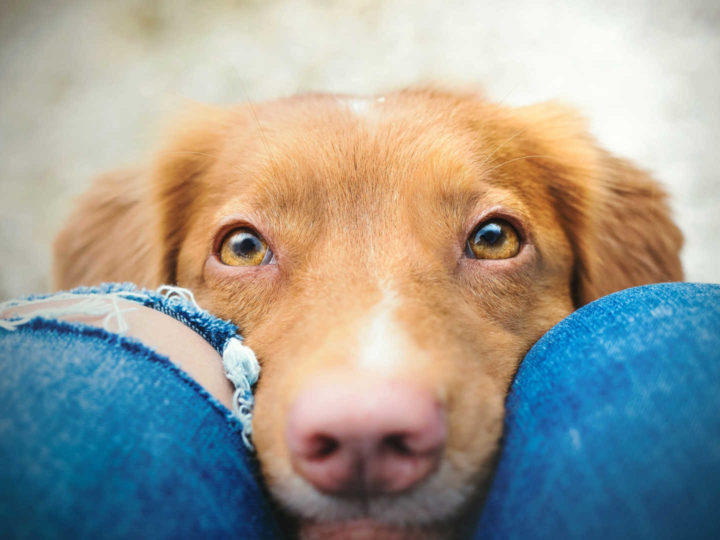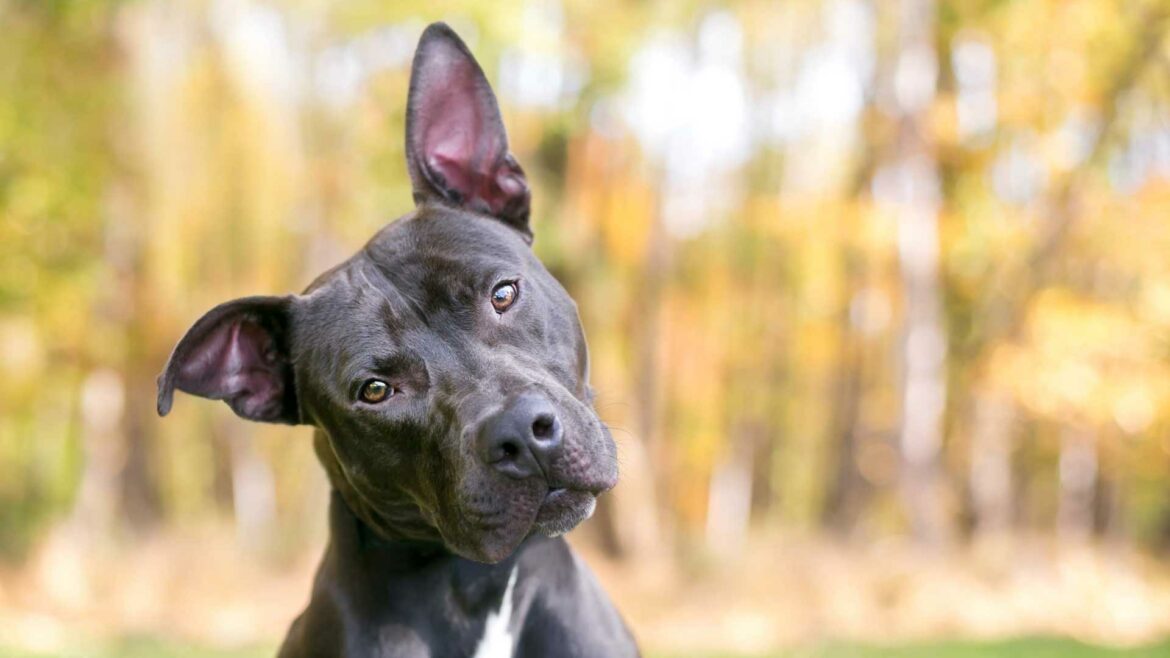
On March 3rd we celebrate World Hearing Day. This anniversary was established by the World Health Organization to raise awareness about the importance and consequences of hearing problems. But how is this particular day related with dogs, our sweet life companions?
World Hearing Day gives us an opportunity to talk about one of the most developed senses of our four-legged friends. In this article we will in fact discuss the topic of dogs’ hearing, from the characteristics of ears to the differences between the canine and human auricles. We will also see how ears change from one breed to another and how the dog’s hearing develops over the years.
As they say in these cases: let’s be all ears and… let’s start!
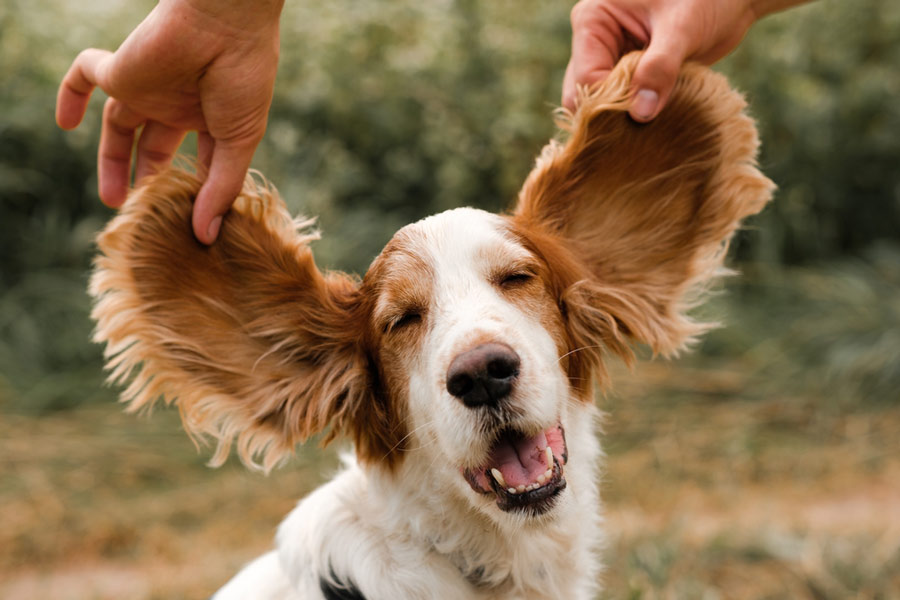
We’re all ready to listen, our trusted friend as well!
Characteristics and functions of dog’s ears
Hearing is a fundamental sense for dogs. Let’s remember that our beloved pets are direct descendants of the wolf, whose ears have developed over time like real radars. In fact, the ears of wild canids are able to locate the source of a sound up to 10 km away!
Like many other characteristics, also those of wolf’s ears have remained in the dog, acting first of all as system of sound catching, but not only. Here are the main functions of our fur babies’ ears.
Coomunicative function of dog’s ears
Dog ears are powerful means of expression that contribute significantly to non-verbal communication. Through the movement and position of the ears, a dog can express a variety of emotions and intentions:
- Perked and forward ears: when a dog holds his ears perked and forward, it is generally a sign of concentration. This may indicate curiosity or interest in something that has caught their attention. In some contexts, it can also signal a state of mind of alarm or readiness to react to a perceived threat;
- Ears back: this position of the ears is typically a sign of worry, perplexity and even surrendering. A dog that lowers his ears in this way is trying to appear less threatening and it may be an attempt to appease a dominant individual or to express comfort in a stressful situation;
- Relaxed ears: ears in a neutral or slightly lowered position indicate that the dog is relaxed and joyful. This is the most commonly observed ear position when dogs feel safe in their environment.

Perked ear and tilted head. The dog has our full attention.
The ability to correctly interpret the position of dogs’ ears can help improve communication and understanding between us and our four-legged hearts, helping to strengthen the bond between the pet and his keeper.
Protective function of dogs’ ears
The shape of dogs’ ears is structured not only to capture sounds, but also to protect the inner ear from a variety of environmental conditions. This aspect is made possible thanks to various anatomical and physiological characteristics of the ear.
- Structure and position: the shape of dogs’ ears helps prevent debris and dirt from easily entering the ear canal. Some breeds have floppy ears thus covering the inner part of the canal, while others have upright ears that appear more exposed but that are actually able to move so as to protect the entrance to the ear when necessary;
- Internal hair: the presence of hair inside the ears acts as a natural filter, trapping small particles of dirt and debris before they can reach the ear canal. This feature is particularly useful in outdoor environments where dogs are more exposed to potentially harmful elements; however, in some fur babies the hair can be so thick that it becomes annoying, so it may be advisable to trim it.
- Earwax secretion: glands located inside the ears produce earwax, which has antimicrobial properties and acts as a deterrent to insects and other small organisms. Earwax also helps trap dirt and debris, making easier their removal from the ear;
- Ability to move: dogs can move their ears in response to environmental stimuli, allowing them to partially close the ear canal in the presence of water, strong winds or flying objects, thus reducing the risk of injury or infection.

Folded ears as protection from the wind and head out the window. Let the fun begin!
The function of thermoregulation
Although it’s not their main function, ears contribute to the regulation of body temperature. Specifically thanks to:
- High vascularity: dogs’ ears have a dense network of blood vessels that play an important role in regulating the body temperature. If the outside temperature increases, blood vessels in the ear dilate allowing warm blood to flow through the ears and disperse heat into the surrounding environment;
- Large surface area: breeds with large, floppy ears have a larger surface area through which heat can be released. This is particularly advantageous during exercise or in very hot conditions, which lead the pet to need to quickly disperse excess heat to keep his body temperature within safe limits;
- Cooling and evaporation effect: moist in ears, caused by both sweat and environment temperature, can evaporate, carrying away heat and contributing to the cooling process. This effect is similar to the reason why humans sweat, although in dogs sweating is limited to a few areas of the body, such as paws and ears.

The ears are an important source of thermoregulation especially during the warm season.
We can therefore say that dog’s ears play essential roles, both in protection against injuries and infections and in maintaining thermoregulation. This system of protections and cooling is essential for the general health and the well-being of fur babies, who can thus explore and interact with the environment in a safe and comfortable way.
The function of orientation
The ability of dogs to move and orient their ears independently of each other is fundamental for the accurate localization of sounds:
- Ear independence: dogs have the ability to move their ears independently. This allows them to quickly orient themselves to the source of a sound without having to move their entire head, thus increasing their efficiency in identifying sounds in an environment;
- Sensitivity to sound: the extraordinary sensitivity of canine hearing allows them to perceive sounds at much greater distances than humans, as well as detecting both very high and very low frequencies. This sensitivity, combined with the ability to orient their ears, makes dogs particularly skilled at hunting and studying the surrounding area;
- Accurate localization: the shape of the ears and their ability to detect minimal differences in the arrival time of sounds, between one ear and another, allow dogs to precisely determine the direction from which a sound comes.
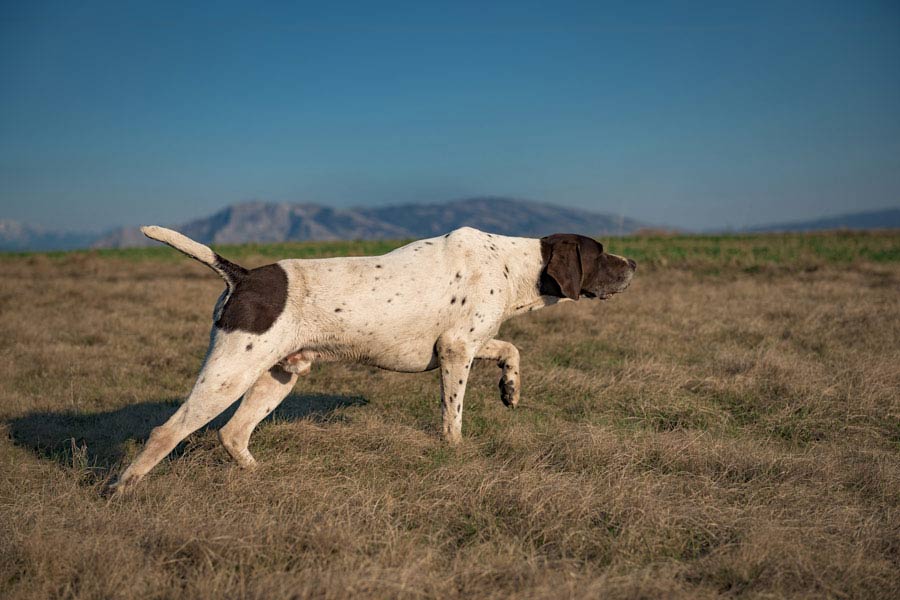
The English Pointer is a great example of the perfect use in dogs of different senses.
The orientation and localization of sound are therefore fundamental aspects of dog hearing, which allow dogs to communicate effectively, move in their environment and respond appropriately to threats or even to seize opportunities. These abilities highlight the evolution of canine hearing as a sophisticated tool for interaction and survival in their natural and human environments.
Ears in different dog breeds
Dogs’ ears vary greatly in shape, size and position depending on the breed, reflecting specific adaptations to certain environments, functions or aesthetic preferences developed during selection and breeding. These differences in the ears are not only distinctive and characterizing for each breed, but also have practical and functional implications. Let’s explore the various types of ears in more detail.
Types of dog ears
There are different shapes of ears, each associated with dog breeds, which give our four-legged hearts peculiar characteristics. Among the different types of ears we find:
- Erect ears: breeds such as the German Shepherd and the Siberian Husky have this type of ears. This particular shape helps better capturing sounds, a particularly useful feature in open environments where listening to sounds at a distance can be essential for hunting or guard activity. Erect ears also allow better water and air drainage, reducing the risk of infections.
- Drop ears: breeds such as the Beagle and Cocker have ears that hang down the sides of the head. These ears can help collect and direct sounds towards the ear canal, thus improving the perception of closer sounds, particularly useful for tracking or hunting dogs that follow the prey mainly through smell;
- Rose ears: Breeds like the Greyhound have ears that fold back. This shape can minimize endurance during high-speed running, optimal for racing or tracking breeds.
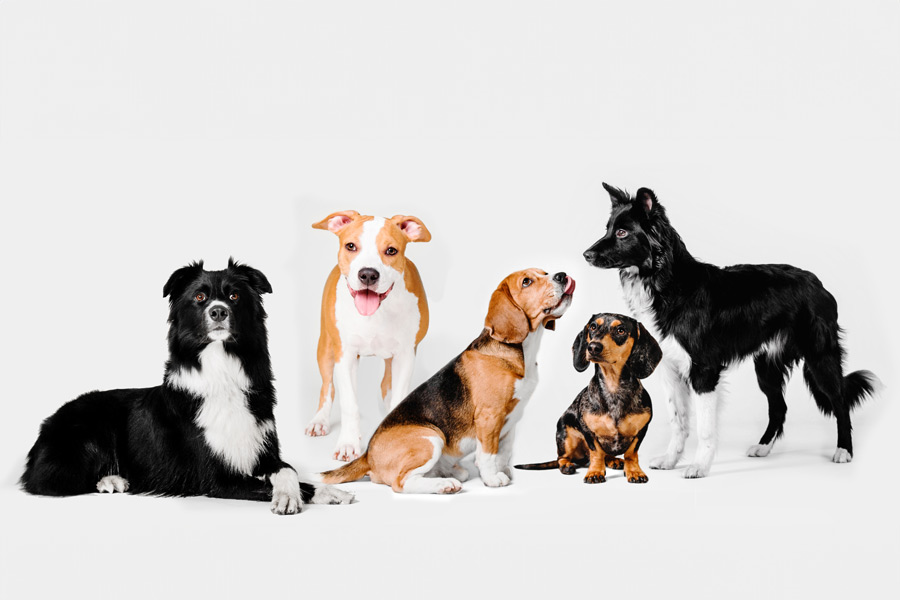
Each breed has a specific and characteristic shape of the ears.
In addition to ear shape, sizes vary depending on the breed: from the Basset Hound’s large, long ears that can help better gather scents from the ground while hunting, to the Bull Terrier’s small ears that contribute to a distinctive appearance and can be less exposed to injury.
The position of the ears on the head also varies. Some breeds have ears positioned high on the head and this helps to improve the ability to localize sound, while in others they are positioned lower down, influencing the direction from which sounds are perceived.
The reasons why dog breeds have different ears
Variations in dog ears, as we have seen, are also the result of specific evolutionary adaptations and selection. Among these, for example:
- Environmental adaptations: ear characteristics may reflect adaptation to certain environments. In fact, erect ears can be advantageous in cold environments to reduce the risk of frost, while drop ears can protect the ear canal from debris in wooded or dusty environments;
- Functionality: the shape and size of the ears can improve the hearing abilities necessary for specific activities, such as hunter, guard or shepherd dogs, influencing the selection of these characteristics in certain breeds;
- Aesthetics and breed preferences: some ear features have simply been selected for purely aesthetic reasons, to comply with breed standards or individual preferences, without a clear functional advantage.
The differences in dog ears according to breeds are a clear example of how natural and human selection have shaped these characteristics to adapt to specific environments, functions and preferences. These variations not only contribute to the diversity and beauty of the canine world but also offer valuable information on the origins, lifestyles and functions of different breeds.
Indeed, until 2016 it was also possible cropping dogs’ ears for aesthetic reasons. After that date, fortunately, the practice of conchectomy was made illegal throughout Europe. In Italy, however, there is an exception for good reasons. The operation can still be carried out by a veterinarian, but only if the choice is driven by the dog’s health needs.
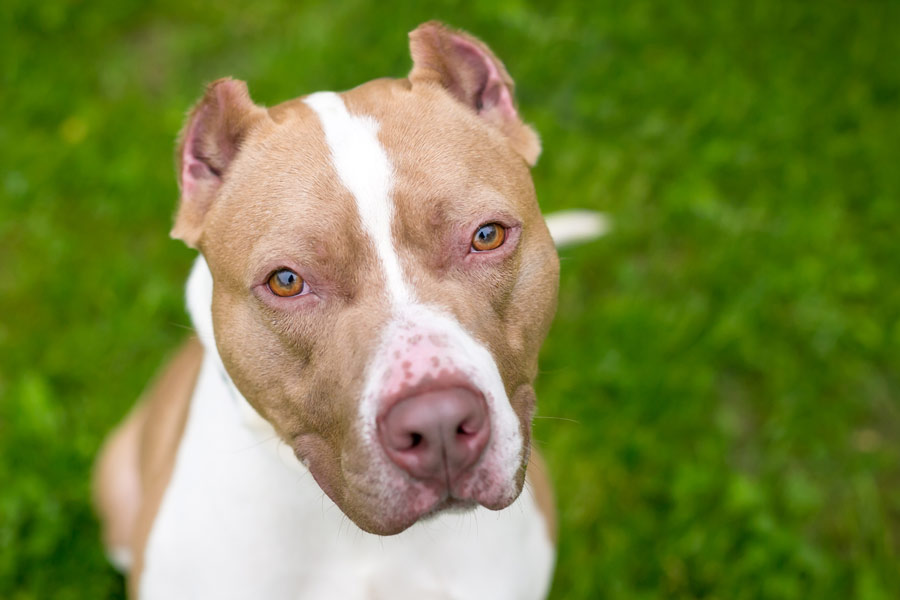
Conchectomy is no longer legal, except for medical needs of dog care.
Differences between dog ear and human ear
The hearing of dogs and humans differs greatly, both regarding perceptive abilities and the anatomical structure of the ears. These differences are the result of the evolution of each species, in response to their environmental and survival needs.
Let’s examine closely the differences to better understand how these differences translate into hearing abilities, differentiated for each species.

Different ears, but a love in common: it’s the unique relationship between the pet and his keeper.
Differences in perceptual abilities between canine and human ears
The perception of sounds is fundamental for survival and social interaction for both dogs and humans and, as we have already seen, differences in perceptual abilities reflect specific adaptations to different environments and lifestyles.
- Frequency: dogs can hear sounds at much higher frequencies than humans. While human hearing can perceive sounds from around 20 Hz up to 20,000 Hz, dogs can hear sounds from around 40 Hz up to 60,000 Hz. This ability allows dogs to perceive ultrasounds, which are sounds that are too high-pitched and therefore inaudible for the human ear;
- Sensitivity: dogs have more sensitive hearing than humans, allowing them to perceive sounds that would be too faint for the human ear to detect. This high sensitivity makes them particularly attentive to environmental stimuli.
Dogs’ great perceptual abilities not only improve their interaction with the environment but also strengthen their ability to communicate and socialize, both with humans and other animals.
Differences about the structure of dog and human ears
In this case as well, the structural diversity of ears between dogs and humans reflects differences in hearing abilities and the importance of physical adaptation to specific environments and behaviors. The main differences concern:
- Shape and mobility: dogs’ ears are considerably different in terms of shape and have a mobility that allows them to efficiently position themselves towards the source of the sound. This movement ability improves their ability to detect sounds accurately;
- Ear canal: the shape of the ear canal in dogs, which is longer and more angled than that of humans, works as a protective barrier against infection and debris, furthermore it provides a more accurate sound localization;
- Fur: The presence of thicker hair in dogs’ ears not only offers additional protection but also acts as a filter for debris and dust, reducing the risk of infections and keeping the inner ear clean.
Why do dogs and humans ears differ?
Let’s see the reason why they differ:
- Evolution and environmental adaptation: dogs evolved in environments where the ability to perceive high-frequency sounds and to precisely locate the source of the sound was essential for hunting and survival, while humans developed themselves in contexts where verbal and visual communication played a major role;
- Communication: non-verbal communication through the ears is much more significant in dogs than in humans. This has led to the development of more expressive and mobile ears in dogs, unlike human ears, which are more static and oriented towards receiving a different range of sound frequencies.
- Protection: the need to protect the inner ear from external elements has led to a differentiation in the structure of the ear canal and in the presence of fur in the ears of dogs; these adaptations that are less critical for humans due to different environmental exposure.
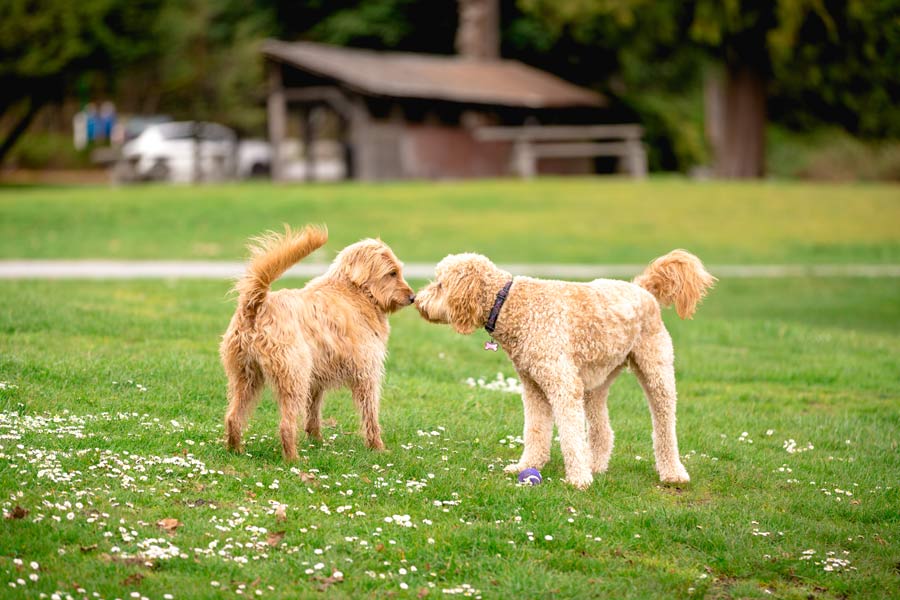
Ears are one of the most common forms of nonverbal communication among dogs.
These peculiar aspects highlight how evolution has shaped the hearing and ear structures of dogs and humans in unique ways, adapting them perfectly to their ecological and behavioral groups!
Changes of dog’s hearing over the years
Dogs’ hearing, as it happens with other sensory and physical aspects, undergoes significant changes throughout dogs’ lives, from birth to old age. These variations are influenced by genetic, environmental factors and the aging process. So let’s see how the hearing of our four-legged friends evolves over time.
Hearing in puppies
At birth, puppies are deaf. Their ear canal is closed and only after about two weeks does it begin to open, allowing them to begin to perceive sounds for the first time. This process can vary slightly depending on the breed and size of the dog, but generally within the first three to four weeks of life, puppies develop the ability to hear fully. This period is crucial for the puppy’s social and environmental interaction, as he begins to respond to sounds, stimuli and recognize voices.

Did you know that puppies are born deaf?
Dog’s hearing development
As puppies grow, their hearing improves. They are able to recognize a wide range of sounds and locate their origin accurately. When they become adults – between 9 and 12 months of age – their vocal training becomes more effective, as dogs are able to link the sounds of specific commands to actions. During this time, accustoming your fur babies to exposure to different types of sounds in a safe environment can help prevent fears or sound phobias later on.
Hearing during adulthood
Adult dog hearing is extremely developed and it represents one of their most advanced senses. They use their hearing not only to communicate with other dogs and humans, but also to detect and react to potential threats or dangers. During these years, a dog’s hearing remains relatively steady, unless they are exposed to factors that can cause hearing damage, such as extremely loud sounds, ear infections, or trauma.
Aging and deafness in dogs
As they age, many dogs begin to show signs of hearing deterioration. This natural aging process can lead to a decrease in the ability to hear high-frequency sounds initially, followed by an overall reduction in hearing. Deafness in older dogs can be caused by several factors, including the earwax buildup, ear membranes thickening, changes in the auditory nerves, or even chronic diseases such as otitis media or interna.
Age-related deafness, also known as presbycusis, cannot be prevented or treated, but dogs are able to perfectly adapt to this condition. In fact, they may begin to rely more on other senses, such as sight and the sense of touch, to communicate and to move in their environment. For keepers of older dogs, it is important to be aware of these changes, adapting their care and communication, to ensure their dog maintains a good quality of life.
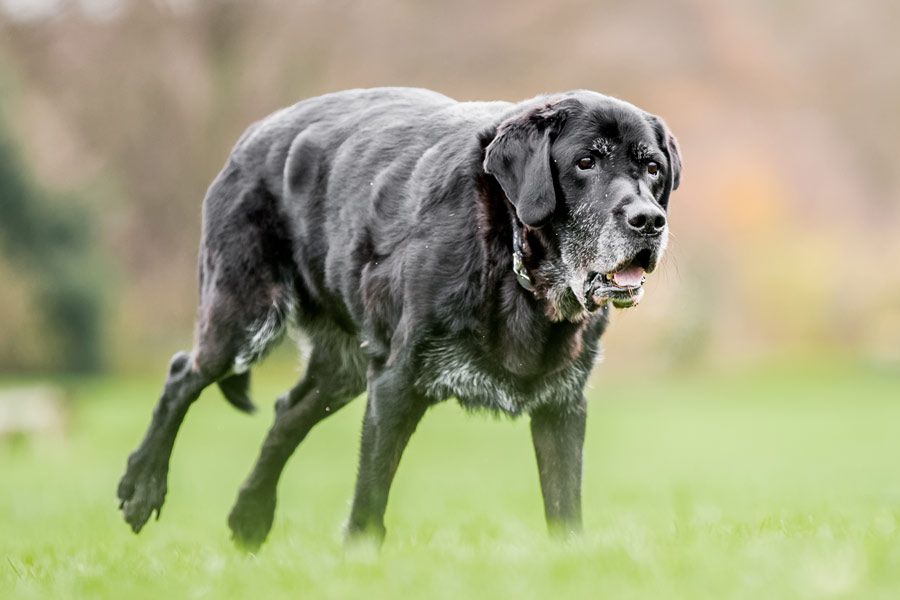
As they age, it is normal for dogs to experience hearing loss.
Dog ear care
Taking care of your dog’s ears is essential to keeping their health in excellent condition and preventing problems that can be annoying or even dangerous for the animal. Correct ear hygiene helps avoid inflammation, parasites and earwax buildup which can lead to annoying skin irritation, pain or hearing loss. Here is a guide on how to take care of your dog’s ears and the importance of carrying out this practice:
- Regular checks: checking your dog’s ears regularly is the first step to good care. This includes examining the ears outside and inside, looking for signs of redness, unpleasant odor, excess earwax, small parasites, or any abnormalities;
- Cleaning: use a specific and suitable product for cleaning dogs’ ears, such as Ear Cleansing Lotion. It is important not to insert objects into the ear canal, but simply clean the external part of the ear and the entrance to the canal with a practical cotton pad (one for each ear) by rubbing it gently;
- Drying: after the bath it is important to dry the dog’s ears, especially for breeds with floppy ears, to prevent humidity which can cause the proliferation of bacteria;
- Parasite control: it is important to ensure, with correct prophylaxis, that the dog is protected from parasites such as ticks, fleas and ear mites, which can cause irritation and infections;
- Vet checks: at the slightest problem (such as excessive rubbing of the ears or shaking of the head), it is essential to consult a vet for a diagnosis aimed at acting with the specific treatment. Ear infections can unfortunately become problematic, sometimes serious, if they are not treated promptly with the right care.
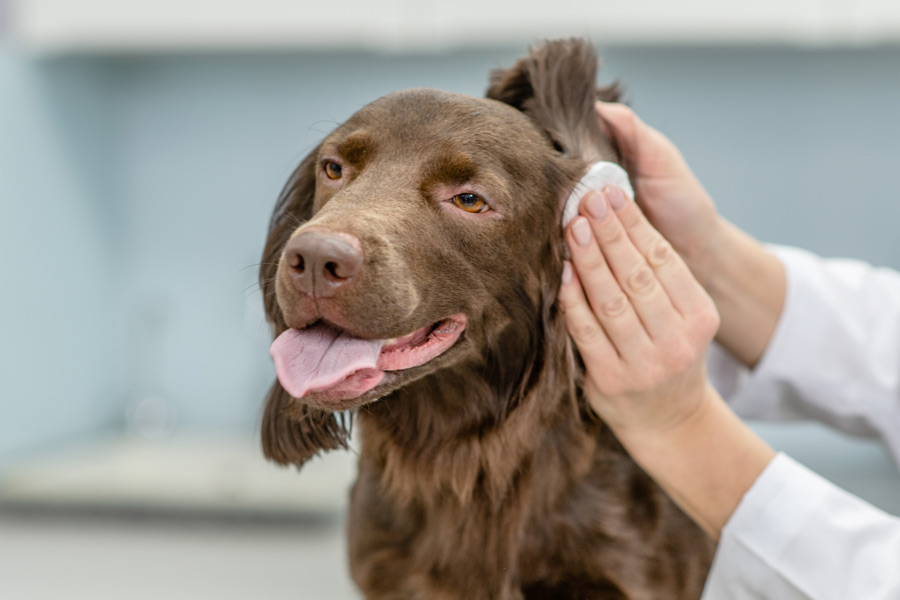
It is essential to cleanse and to take care of our dog’s ears.
In this article we have proposed many curiosities about the hearing of our beloved dogs and the differences between dog and human ears, their functions and why it is important to take care of their hygiene and cleanse.
If you want to learn more about the other senses of dogs, such as their sight, don’t miss this article regarding the eyes and the visual abilities of our four-legged friends!





